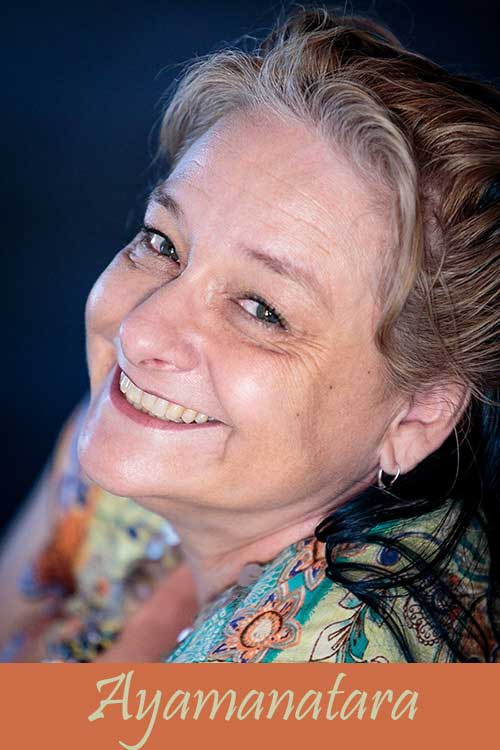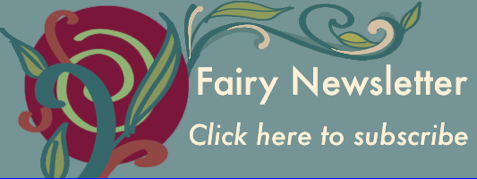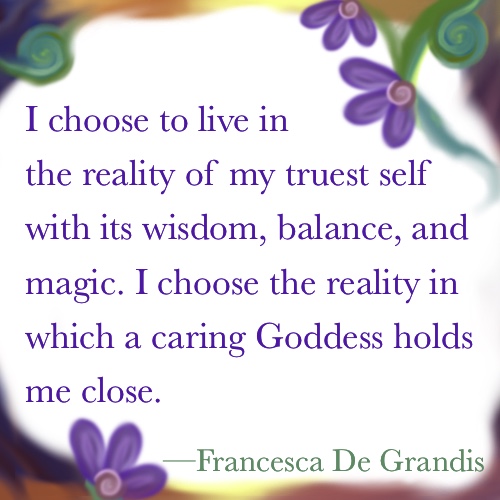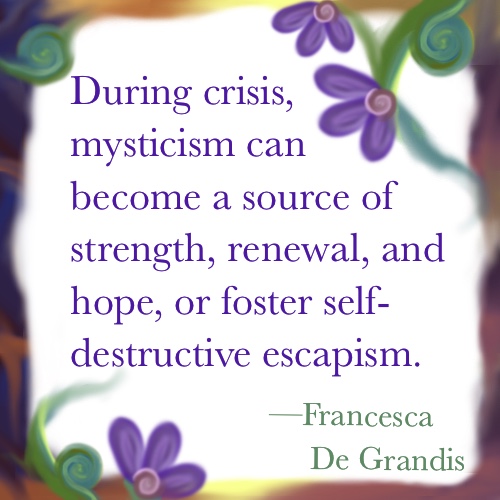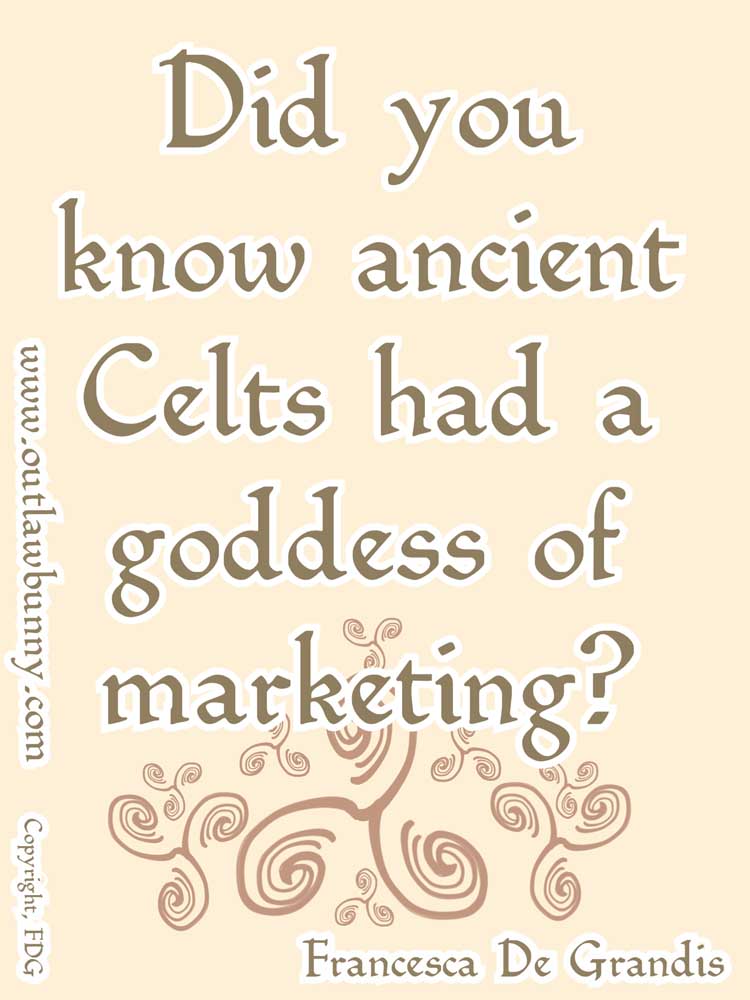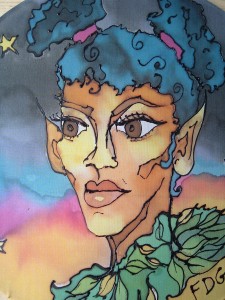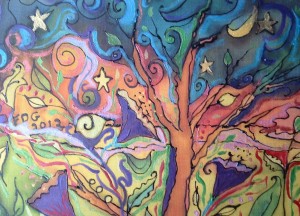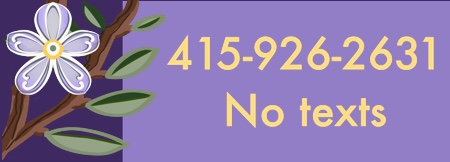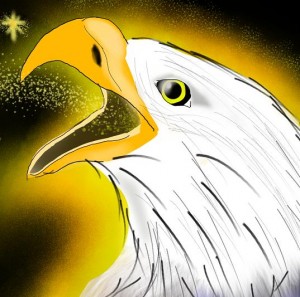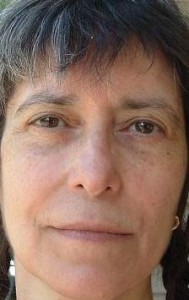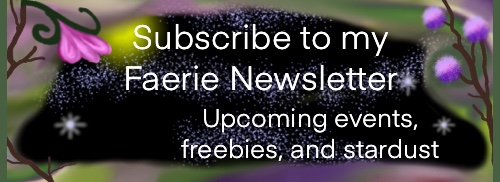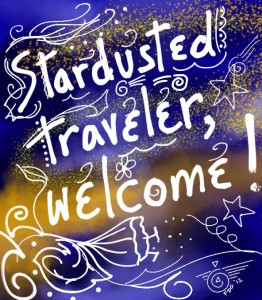Tag Archives: mysticism
Ayamanatara on Kabbalah
Ayamanatara: A Lesson in Kabbalah
One of the joys of having an independent website is showcasing my wonderful students. Meet Ayamanatara, who has studied with me for a number of years.
An ardent seeker, Ayamanatara has studied with determination and respect numerous Shamanistic practices, folk magic from around the globe, Kabbalah and the Western Mystery Tradition, and major Western religions. Her practice is a synthesis of everything she has studied, from a Shamanic viewpoint that honors the masculine and the feminine, with a focus on Empowerment, Community, and Equality. It is from this place that she designs her courses, creates custom ceremonies, writes books, and works one-on-one with clients.
I asked Ayamanatara to write an article about Kabbalah. Here it is:
Kabbalah
I’ve been teaching Kabbalah for probably 15 years. I will always be a student of Kabbalah, because it’s one of those subjects that always has new discoveries for me. It’s full of endless epiphanies.
There are different ways of coming at Kabbalah. It is a form of Jewish mysticism kept sacred by the Hassidim; anyone who studies Kabbalah owes them an enormous debt for keeping the main body of work safe for centuries. Did you know that there are also forms of Kabbalah in mystical Christianity (specifically Rosicrucian) and in mystical Islam (amongst the Sufi)? I think the most common path outside of those would be Ceremonial Magic, which can be part of any number of traditions. This is the form of Kabbalah we see most of the books about, unless it belongs to a specifically religious path.
What is Kabbalah?
If you have 5 kabbalists in a room, you’ll get at least 6 opinions about what Kabbalah is. But I can tell you what Kabbalah is to me. It’s a study of everything. Using the Tree of Life as a glyph or a diagram, a person can discover the energies of creation, the aspects of themselves, and the facets of the Divine and how those relate to titanic and mythical beings and to physics itself, and a person can also use the energy of the Tree of Life to create real, measurable change in their life. Everything is interconnected, and the study of Kabbalah can help us see that. And when we can see the flow of energy, it’s empowering.
It’s also a mystical philosophy, like Buddhism. I don’t feel like it contradicts belief systems; rather it works in concert with them, which may be why each of the People of the Book religions has a thread of Kabbalah in their mystical tradition. I also see parallels with Buddhism (especially in the idea of The Middle Way) and Hinduism (within the energy centers known as Chakras). As a mystical philosophy, the teachings are designed to help the seeker have an experience of the Divine. That experience cannot be handed to you, it’s personal for each person (which is the definition of mysticism). I (or any skilled teacher) can give you the tools to get there, though.
My Own Path of Kabbalah
I come to the broad table of Kabbalah via both Ceremonial Magic and Shamanism, with some religious scholar flavorings. I realize that the Tree of Life, which to me is a blueprint of everything, is going to relate to a lot of different things, especially magical practices. And, conversely, Kabbalah helps me organize information into manageable parts, so it helps me relate to the world as a whole.
Because of who I am and the path that my life has taken, my connection with Kabbalah is also very much flavored with my keynotes of Empowerment, Equality, and Community. That means that my mysticism seeks to create a level playing field. I try to avoid gendered terms – I do talk about the Feminine and Masculine Divine, and about Gods and Goddesses, because those are real and gendered. When it comes to energies, I am more gender neutral. For example, instead of referring to the outer pillars as masculine and feminine, which is a pretty common practice, I talk more about push and pull, or active and passive/receptive, or as being boundaried vs chaotic. Just like humans have a spectrum to who they are, so does energy. Pigeonholing an active force is dissonant to me, whether it’s the mechanism of energy or a human being. Gender is a social construct anyway, so I try to step out of that, to give my students a more precise understanding of the polarities without preconceived notions.
How to Find Your Own Path of Kabbalah
There are books you can read about Kabbalah, although I have found that they’re frequently dense and hard to get into if you haven’t studied any of it yet (and sometimes even if you have). Some of the ones that aren’t overly esoteric are too simplistic to help you have a mystical experience. There’s a group here in Los Angeles which holds regular meetings or services, and some people really groove on them; I find them very heady. Having an in-person teacher does give you an experience the written word cannot (in-person, of course, means something different than it used to). Finding a teacher with whom you resonate is equally as important. There are an infinite ways of imparting the information – you want to find the technique and the teacher that make the lightbulb in your head light up. Put the energy out there, if you are interested in pursuing Kabbalah teachings more, and the Universe will likely put the right tools and teacher in front of you.
*************
Francesca here:
A while back, Ayamanatara told me, “I have the same reaction when I’m sitting with you as when I’m sitting with anyone who teaches Kabbalah. I have frequent moments of inspiration about how your teachings weave with Kabbalah.”
And she has mentioned parallels between Kabbalah and the Fairy Shamanism I teach her.
This post was going to be a conversation about these similarities.
Ayamanatara’s comments about the parallels interested me. I never studied Kabbalah. I channel a lot of my lessons. It amazes me that we seekers find the same universal truths when we search.
The creative process wanders as it will. We put aside the idea of comparisons in favor of an article by Ayamanatara.
The creative process did its thing again. I realized that I could add a few parallels at the bottom of her article:
1) Ayamanatara wrote, “The Tree of Life … is a blueprint of everything.” That is similar to what I teach:
I see the Tree of Life as the Magna Mater—Great Mother Goddess. Why? Because I experience Her as all things and all powers, magical and worldly. She has also revealed Herself to me as all lessons and the path to all knowledge. Her endless power and wisdom help create miracles for my students and me.
2) Ayamanatara wrote that everything is interconnected, and the study of Kabbalah can help you see this.
Yes! I teach that my Gods are the connections between all things, every atom and empty space of the universe woven together to hold me, sustain me, and carry me toward my dearest goals. I give Shamanic tools to students that help them experience this firsthand.
3) Ayamanatara has diligently pursued her mystical education. This helps her be a good teacher. An ardent student makes an ardent teacher.
Power and truth cannot be contained in any single tradition. So I’ve spent my lifetime studying magic, spirituality, and Shamanism.
4) Ayamanatara leads her students to their own experiences.
I teach experientially. A direct experience with the Tree of Life is more transformative than mere lectures. Walking next to Gods provides more bounty and other blessings than anything else might.
My divine Mother and Father pour Their love into every plant, rock, and moment. I give lessons about how to interact with any situation to receive this love. It will come as bounty, peace, and all other blessings, including Their awe-inspiring companionship.
5) There are other similarities:
* power and complex issues presented in an accessible manner
* a focus on equality
* understanding gender fluidity, yet still using terms like Goddess
and Divine Father for Deities who are gendered.
* Most importantly, Ayamanatara is down-to-earth. If teachers who are mystics are not practical, they can be harmful. Too often, mysticism glosses over real life, offers “wisdom” that is oppressive instead of helpful, and misuses spiritual tools so that they squelch students instead of lift them up.
Mysticism needs to include an understanding of oppression and daily human needs. So mote it be!
*************
For new articles, events, and freebies, click the banner below to subscribe to my newsletter.
Mysticism in Times of Crisis
During crisis, mysticism can become a source of strength, renewal, and hope, or foster self-destructive escapism and denial. This post has an empowering ritual.
Please note: though this post discusses how to avoid denial and escapism, sometimes it is important to let them be. Trust yourself to make the right choice. Or, if unsure, ask for input from a trusted expert. For one thing, denial and escapism can be trauma symptoms that help you cope.
Some situations can feel like too much to bear, and I long for something bigger and more powerful than me to fix my problems. I turn to mysticism for the solution. It often works.
Sometimes, all doors seem shut, and I am desperate for a door to open somewhere, somehow. I turn to mysticism. It often works.
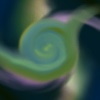 However, mysticism can be healthy or unhealthy. Personally speaking, my otherworldly endeavors must be very grounded in my real life, so I get my feet on the ground and remain down-to-earth. I will explain what I mean by that. … Well, a full explanation would take pages, but I can quickly explain enough for the purposes of this post.
However, mysticism can be healthy or unhealthy. Personally speaking, my otherworldly endeavors must be very grounded in my real life, so I get my feet on the ground and remain down-to-earth. I will explain what I mean by that. … Well, a full explanation would take pages, but I can quickly explain enough for the purposes of this post.
Some of my rituals are not as mystical as other rites I perform. All magic is mystical, but there are varying degrees. Sometimes I do very mystical rituals; they might have highly lyrical liturgies and fanciful images, and create a very trancy, sparkly, buzzy experience. Other times, my rituals are less mystical, more direct, and more straightforward, e.g., they proceed in a rather mundane manner, directly dealing with my inner blocks, by necessitating I own up to a specific anger, fear, self-doubt, sense of powerlessness, or the like. I often deal with anger, trauma, fear, etc., in extremely mystical rituals, but that would be escapism were it the whole of how I handle inner turmoil.
The ritual below deals with unsettling emotions, self-defeating beliefs, and the like in quite a grounded manner, while also including more mystical ritual elements. The more grounded aspects of this little ceremony help keep it from feeding denial and escapism.
The Choice to Have Power: a Ritual for Magnificent Selfhood and Divine Support
This magical spell can help you experience spiritual renewal and fortitude, and feel longed for peace and hope. Other possible benefits are increased confidence and a substantial claiming (or reclaiming) of selfhood—who you are deep down, with all your strengths. The ritual also helps you tap into the Goddess’ immense power.
If, when doing this ceremony, you feel you are not doing a “good enough job,” not to worry. The sheer attempt is sufficient.
If unsure how to implement part of my instructions, you might explore whether that text is suitable for one of the three following approaches.
1. Do a visualization. For an example, let’s use the ritual’s paragraph “I choose to live in the reality of my truest self with its wisdom, balance, and magic. I settle into that reality by letting my body sink into it. I sink into my truest self with its wisdom, balance, and magic.” Decide what physical sensations you might experience if you trusted that you had wisdom, balance, and magic, and then imagine your body feels that way.
2. To continue using the same example, you could recite that paragraph as a liturgy, slowly reciting it two or three times. That can be powerful.
3. Or read that paragraph aloud as if you were telling a Faerie tale, and try to go along with the mood of the tale.
Here’s the ritual:
Additional ritual instructions:
1) During the ceremony, if you don’t land smack dab in the center of your personal essence, at least momentarily, you likely moved radically toward it. Try doing the ritual once a day for five days, over the course of a week, to continue the energy’s positive direction.
2) If you feel performing the ritual once didn’t progress you toward your magnificent selfhood at all, it could’ve happened anyway—even to a large degree—without you feeling it yet.
3) If the ritual felt effective, or even fairly so, you might want to do the ritual twice more over the next week, to re-find, remain in, or move deeper into the reality of your most competent beautiful self who is living in the care of a loving Goddess.
4) Here are two reasons to work on only a single block in the ritual:
Sometimes, working on more than one not only diffuses a ritual’s energy but also turns the rite into escapism.
Also, focusing on a single block allows me to own up to it on a gut level, rather than just recognizing it with my mind. That gut recognition can make a big difference in whether I can move past that block or not.
I’d love to hear how this ritual goes for you.
 … I want to time how long it takes to read and execute this ritual. … It took nine minutes, reading slowly. That nine minutes includes time I added for pauses in case someone needed to go over the instructions to better understand them. The timing also represents doing the rite as you read the post, as opposed to reading it all first then going back to do the ritual.
… I want to time how long it takes to read and execute this ritual. … It took nine minutes, reading slowly. That nine minutes includes time I added for pauses in case someone needed to go over the instructions to better understand them. The timing also represents doing the rite as you read the post, as opposed to reading it all first then going back to do the ritual.
I timed for three reasons. I wanted to see if this is a ritual that easily fits into a busy schedule.
Brief ceremonies can be powerful.
I also wanted to see if I might use the ritual in the Virtual Pagan Monastery, an event held via group phone calls. The meetings are mini-retreats that last fifteen meetings, and I lead a ritual in each one. A nine-minute ritual leaves us time to open with the quick protection spell with which we always kick off meetings. We’d also have time should anyone need to jump in to ask a question about instructions as we were doing the rite. Perfect!
My third reason for timing is that I love my Virtual Pagan Monastery. It’s a chance to touch down a few times a week with other seekers and lead a rite to take care of ourselves. But some folks don’t enroll because they don’t realize that brief rites can be powerful. So now this little ceremony is here to prove otherwise.
Traditional Shamanic Culture and Business
Did you know ancient Celts had a goddess of marketing? Or that their shamans charged for many of their services, as did ancient Native American shamans? Did you know ancient Mesoamerican merchants traveled to find sacred goods?
Shamanic culture once brought the sacred into commerce, in a way we desperately need today for two reasons:
1) It will allow us fulfilling, loving, profitable work.
2) It can help stop the immense, worldwide suffering caused by callous business practices.
The division of sacred and profane in the marketplace strikes at the core of human rights, Faerie witchery, and happiness.
As a witch, I’m part of a long heritage of magic used as a tool to free people from oppression. As long as the marketplace is driven by profit to the point of callousness, instead of by an ethical focus on being of service, results will remain tragic.
So I developed innovative theories and methodologies that provide a missing piece of witchery—a shamanic approach to the marketplace. I teach it in my new book:
A Sacred Marketplace:
Sell without Selling Out or Burning Out.
Mysticism + Marketing = Sales.
The book is two pronged in its benefits:
1) Many ethical, loving people have special gifts they want to bring into the marketplace but are stymied because they can’t figure out how to maneuver the insanity of our current business world.
These folks include artists, psychics, coaches, and others in alternative fields. Also included are people whose heartfelt dreams are less obviously special—e.g., you can make cosmetics in a loving way.
A Sacred Marketplace shows good people ethical ways to thrive in business. The book teaches
* easy, powerful, ethical marketing
* my personal philosophy of life, which is shamanic and spells out why it is moral to earn a living doing what we love and how doing so is vital to the well being of all Gaia’s children
* shamanic exercises to help you actually live that philosophy and develop personal traits for career success
2) The other benefit: if these good folks were in business, their sheer presence would help shift our business world into one where people matter more than profit. These loving practitioners would not have to do anything other than be present in the marketplace.
More talented good-hearted people in the world of commerce will—without these individuals even trying to do so—automatically transform the dominant business paradigm for society as a whole, from corporate, uncaring greed to loving concern for the individual.
I’m delighted I was able to create this book’s material. I am proud of my work in a way this society tries to squelch. Be proud of yours. Enter the marketplace with your special gifts and be prosperous. In the process, you’ll make a better life for everyone.
I care about you, so I beg you: do not wait. Great endeavors start when someone says, “I’ll do what I can.” If all you can manage is reading two minutes once a week, and you have no time to analyze what you read or to apply it, that’s a legitimate start. The book is Third Road shamanism, which means you absorb on a gut level, just by reading. Do it. Click here for A Sacred Marketplace: http://www.outlawbunny.com/2015/10/15/a-sacred-marketplace/
Traditional Witchcraft, Spirituality, and Ethics
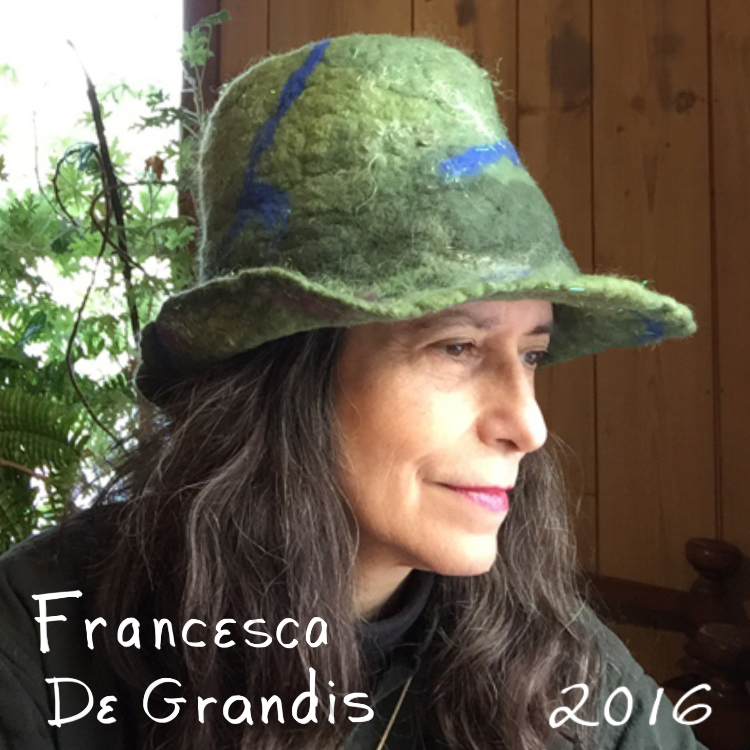 Currently, it is a prevalent opinion among Pagans that traditional witchcraft was strictly magical, lacking theology or moral aspects. While I can respect that theory, it is not congruent with my own experiences. I suspect whether traditional witchery had sacred or ethical aspects varied by locale or by family tradition.
Currently, it is a prevalent opinion among Pagans that traditional witchcraft was strictly magical, lacking theology or moral aspects. While I can respect that theory, it is not congruent with my own experiences. I suspect whether traditional witchery had sacred or ethical aspects varied by locale or by family tradition.
I never argue with anybody’s experience, only their theory. Theory is ever-changing. I’d never want to invalidate anyone’s experience, including my own. I’ll share mine below.
My experiences lead to conclusions that differ from the aforementioned current popular Pagan position. I hope to add to the Pagan dialogue on the topic, and provide support for those who, like me, have an unpopular point of view.
Growing up in a family tradition, I learned magic and a mystical worldview con leche. Therefore magic and mysticism were a given, as much a part of life as the air I was breathing. In the process, a religious and ethical worldview was deeply ingrained in my cells.
Note I say “my cells,” not “my brain.” It took my entire childhood and adolescence to imbibe the tradition’s basics, because cellular lessons take time.
The understandings of the tradition were so deeply imbedded in our home life that much of the family tradition was taken for granted, not out and out spoken, but more implied and lived. This includes the theist or moral aspects.
In fact, calling it an understanding in the above paragraph is somewhat of a misnomer. It is not so much an understanding as a way of being.
In any case, a lifestyle with many of its important aspects being subtle or unspoken seems an earmark of many traditional witches I have met.
When I got older, I saw that this subtlety sometimes causes people who were viewing the family tradition from the outside to not see the tradition’s deep religious and ethical roots, only the more overt—and perhaps less core—trappings. When I participated in family traditions in Europe, I usually found deep religious and ethical roots in them.
Observers are not engaged in the family culture. They are standing outside it, watching. Only by being part of a shamanic family culture over a long period of time can one can really understand the culture. The notion that to watch something is to fully understand it is a fairly current concept of scholarship. As I said above, learning the traditional witchcraft of my family required an experiential, long term lesson.
It has become almost de rigeur to insist traditional craft never had sacred or principled aspects. This makes it important to me to write this post about my family tradition, because I feel I’m speaking up for my Gods, for my witch ancestors, and for others who feel as I do.
I do not like it when a theory ceases to be a theory and becomes a mandated belief—in other words, when someone is mouthing somebody else’s words to, consciously or not, invalidate other seekers. Unfortunately, the concept that traditional witchcraft had neither ethical nor theological base has become yet another Pagan rote declaration, usually said—or written—in an intimidating tone of I-know-better-than-you-so-whatever-you-think-is-stupid.
I can admire people who authentically believe other than I do. An informed and friendly exchange of ideas about traditional craft, spirituality, and ethics could be a lovely thing. Healthy debate is a wonderfully educational process for everyone involved. A supportive, respectful, and thoughtful exchange of ideas can do wonders.
But debate is not the same as trying to legitimize and define one’s path by invalidating someone else’s. That hurtfully invalidates a lot of newbies who already feel insecure about their belief system. This can crush a newcomer’s spirit.
Coming to our community, hoping to finally find fellowship, but instead encountering someone just as invalidating as mainstream society, can be doubly heartbreaking, because they thought they had finally entered a safe space. So they often never participate in our community again, and end up without support in their Pagan explorations.
People who need to squash others in order to validate their own power have less power than they think, and more mere bluster than they realize.
Thus, I felt impelled to write this post to support invalidated Pagans.
A last thought on traditional witches and ethics: perhaps in some cases, a lack of morality had less to do with any tradition and more to do with human nature. Some people just take anything, even that which is moral and sacred to begin with, strip it of those roots, and use it for their own selfish—or even evil—goals.
I hope this post is a useful contribution to Pagan dialogue about traditional craft.
If you want experiential lessons in traditional craft, I teach The Third Road, a tradition I channel, informed by the magic of my ancestors and my mom. (Channeling teachings is part of traditional craft.) I teach mostly via group phone calls—aka teleseminars. Here’s the link to subscribe to my newsletter, which tells you about upcoming classes: https://outlawbunny.com/newsletter/
Bless you.
DNA and Ancestral Ritual
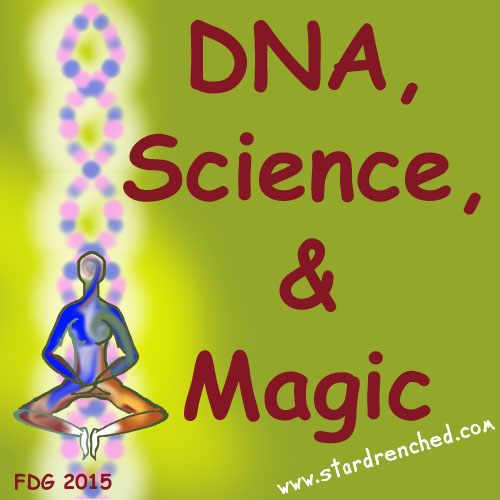 Science and magic meet. I won’t choose between mysticism and science. They can feed each other.
Science and magic meet. I won’t choose between mysticism and science. They can feed each other.
My ancestors are spiritually important to me. So I’m combining science and spirit in a deeply personal way: I ordered an AncestryDNA test kit.
A mystic, I travel through the blood in my veins, back through time, to discover the ancient ways my family once practiced. Today, the logical rational side of me does the same by spitting into a vial. This test tube becomes a chalice that arrived by mail, enclosed in plastic. Two supposedly disparate halves of me come together to feed my spirit.
I mailed my saliva, part of my sacred body, to scientists, who will analyze it to reveal my ethnic background. They’ll go back through many generations, the same way my meditations have. Their work will expand my otherworldly travels.
The lab analysis will determine where my ancestors hail from, based on a science my layperson’s mind can’t understand, no matter how much experts explain it.
Many scientists would be equally puzzled by my ability to uncover historical information by meditating on my blood. I have my expertise, they have theirs. I get to draw on both.
A relationship with my ancestors, in ritual and daily life, is pivotal to me. They lovingly support me. And I tend them. Trance journeys give me a strong intuitive sense of my ancestors. The DNA results can help me know whether my intuitions are correct.
It would be fine to trust my intuition without the DNA results. (Check out my blog about that: Mysticism and Non-Academic Scholarship.) But corroboration is useful.
Science can support my spirituality in other ways, too.
For one, I come from a European shamanic family tradition. Some of my family history has been lost. I’m hoping DNA will fill in gaps.
For example, I might see how major societal events impacted my family’s past generations to shape the family’s spirituality. That familial story could provide context to better understand my own path.
Luck allowed me to gather a staggering amount of anecdotal evidence about my ancestors. Information from relatives, and from strangers I don’t know but who have my last name, and from other sources, provided enormously convincing material, when looked at as a whole. I believe anecdotal evidence is part of folk culture and one source of the old wise ways. This fecund anecdotal evidence can be augmented with DNA science.
For example, the DNA test might help me gather more anecdotal evidence, if it leads to relatives I hadn’t learned about previously. They might know family history I don’t.
DNA results could also be a jumping off point for more ancestral rituals. I love the wisdom of ancient cultures, and appreciate reenactment whether based in textbooks’ history or intuited history. I revere native and ancestral spiritual practices. These leanings feed my desire for DNA info about my ancestral roots.
I can best explain another reason for wanting a test by telling you a personal story.
A friend of mine was part of a DNA study. Before continuing the story, let me be clear: I’m not part of any study. My test kit is from AncestryDNA. They’re not experimenting on me, and their tests results do not show an ancestral timeline such as you’ll read about in my friend’s tale. I checked out some companies, and AncestryDNA seems to give the most comprehensive results. If you’re interested, their kit is also easy to use.
Back to my story:
My friend phoned me one day, and exclaimed rapturously, “I got the DNA results. My family originated in Egypt!”
Then she added, “My later ancestors migrated to Greece. Guess where else my ancestors migrated to?”
I responded, “Mongolia?”
There was a long pause. Then she said, in a stunned voice, “That’s right! How did you know?”
“It was obvious. Your immense love for Egyptian religions motivated you to become an Egyptian scholar, devoted to reviving ancient Egyptian spiritual practices, which became part of your personal devotions. Later, you seriously worked with Greek Gods. Then, you channeled material that had no geographical basis, as far you knew, but later found out that the material resonated with documented Mongolian traditions.”
I continued, “Your family only told you about your Caucasian Irish lineage. But your earlier ancestors influenced your mystical life. Your spiritual quest this lifetime follows the migration of your ancestors, step by step!”
The point of my story: I want to know if my DNA matches my various spiritual leanings.
There can be valid reasons we’re drawn spiritually to cultures we were not raised in. Our DNA might be one of those reasons. I don’t hold with the idea that you should only use the spiritual tools of your obvious ancestors.
Mind you, I am not okaying co-option. I’m saying legitimate cross cultural shamanism exists.
That legitimacy is hard to come by. It would take a whole book to explain how to pull it off ethically and otherwise, so I won’t get into it here, except to say:
By “cross-cultural shamanism,” I don’t mean “core shamanism,” AKA the idea that shamanism is primarily the same in all cultures. I disagree with the modern standardization of shamanism.
My experience is that shamans individualize according to cultural differences, and way past that, individualizing family by family and person by person.
My personal definition of legitimate cross-cultural shamanism is an ethical, thoughtful blend of earth based mysticism as it manifests in various cultures.
Moving on:
I am a little worried. With adventure, comes fear of the unknown: am I going to like the DNA test results?
But mostly I’m excited about the DNA adventure I am embarking on.
And I feel gratitude for science and magic.
When the DNA results arrive, I’ll post them here, and share how it impacts my mystical journey.
********************
Note: I first posted this blog May 2015 at http://witchesandpagans.com/sagewoman-blogs/a-faerie-haven.html and post it again here for those of you who tend to read me here.
********************

Myth, Body, Gaia, Faerie
A Seven-Week Teleseminar:  Shamanic rituals for Faerie shamans, bardic poets, visionary painters, cosmic clowns, spiritual outlaws, and other fey-touched adventurers. And for anyone who wants to become a fey adventurer.
Shamanic rituals for Faerie shamans, bardic poets, visionary painters, cosmic clowns, spiritual outlaws, and other fey-touched adventurers. And for anyone who wants to become a fey adventurer.
This breakthrough mystical training will not happen again for three years.
I’m temporarily defining myth as an altered state, otherworldly realm, or mythic self-identification. Myth has a more complex, inclusive meaning during the actual teleseminar.
MYTH, BODY, GAIA, FAERIE is a seven-week process that experientially integrates living in MYTH, being in a physical BODY, experiencing GAIA on the embodied and mystical planes, and walking in otherworldly realms such as FAERIE. This weave
* unfolds rich experiences and ecstatic mysticism uniquely and innately available to you,
* then deepens those wonders more,
* then deepens them beyond more.
Such an extensive weave can hold many things, including practical needs. Our seven-week class helps starchildren improve our daily life (e.g. finances, love, home, and career).
This includes magic to
* manifest physical health by meeting the needs of your star-touched physiology,
* and heal your soul wounds.
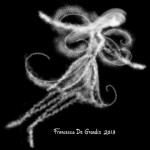 We’ll address loneliness, self-doubt, and other challenges star-wanderers can face when society, misunderstanding the mythological, judges our experiences as deluded, immature, or otherwise “wrong.”
We’ll address loneliness, self-doubt, and other challenges star-wanderers can face when society, misunderstanding the mythological, judges our experiences as deluded, immature, or otherwise “wrong.”
Many mystics face emotional wounds and health problems that might lead one to metaphysical power. But other wounds can result from mystical exploration. Negative impacts from vigorous otherworldly journeys have been insufficiently addressed. My curriculums are exceptions; I channel material that heals the original soul wounds, supports flights into fantastic realms, and trains us to come back whole. Lessons will help
* Make mystical experiences safe. (Star-drenched!)
* Keep Fey-touched individuals safer in their mundane lives. (Stardust still falls on us when we walk on the earth!)
Myth, Body, Gaia, Faerie qualifies as one of the two electives needed before advanced training. If this class does not appeal, other qualifying electives will be coming up.
Enrollment limited. In-depth attention for each participant. Authentic connectivity.
Multi-leveled to meet any degree of experience and education. Accessible to beginners. No prerequisites. Powerful for advanced practitioners.
Nuts and Bolts:
* We meet by group phone call. No computer or other technology required. Just dial your phone.
* We meet seven consecutive Tuesdays, noon to 1 EST, starting April 15. RESERVE June 3, same time, for a makeup class in case I’m unavailable for one of the planned sessions.
* Tuition: $250. You might pay long-distance charges, depending on your long-distance plan. If so, they appear on your phone bill. The event is a U.S. area code.
* Register here.
* If you’ve taken this class, you can repeat it, half-price. Paypal me $125, using outlawbunny@outlawbunny.com as the recipient; include your phone number and the name of the event.
* Upon receipt of payment, I email you event phone number, etc. No refunds.
* If you need more info, or want to discuss scholarship, trade, or payment plan, call me: 814.337.2490. There are ways to make this class happen for you.
* Participants are personally responsible for the consequences of their voluntary participation.
Not the same ol’ rote self-help/mysticism/shamanism. Use your intuition and instinct about my ability to help you shine in your own path. My classes = soul-depth, pivotal movement, playtime.
The spiritual evolution we achieve together will give the rest of the cosmos power to do the same. Click here to register.
Mysticism and Non-Academic Scholarship
A mystic needn’t be an academic to be a scholar. Why is this idea important? Some people create a magical, fulfilling life based in a non-academically-shaped worldview. We also might want to teach from such an orientation. Our cosmology can be as carefully constructed and extensively developed as any scientific understanding, but many would crush our power by insisting there is only one intelligent way to see, to learn, to study.
Trust your observances made through mystical states, e.g., trance. Trust your non-ordinary modes of perception, like intuition.
I’m not suggesting you blindly believe and act on everything you think you’ve observed. For example, when you have an intuition or receive guidance from spirits, run it by a down-to-earth person who exists on the mundane plane. Non-academic perspectives are as subject to fault as academic insights.
But, luckily, I did not wait until a university validated each step of the many I needed to travel along my shamanic path. I’d have taken fewer steps, losing great joy and fulfillment, not only in my personal life but also because I would have taught less.
Academic validation does happen to me lots, and it feels nice. But relying on it as a way to tell myself or anyone else, “See, I know what I am doing” would undermine my belief in my style of scholarship. An example: Pics of subatomic particle tracks validated what I’d seen in trance for decades. But I’d validated it for myself already. Hence the painting below: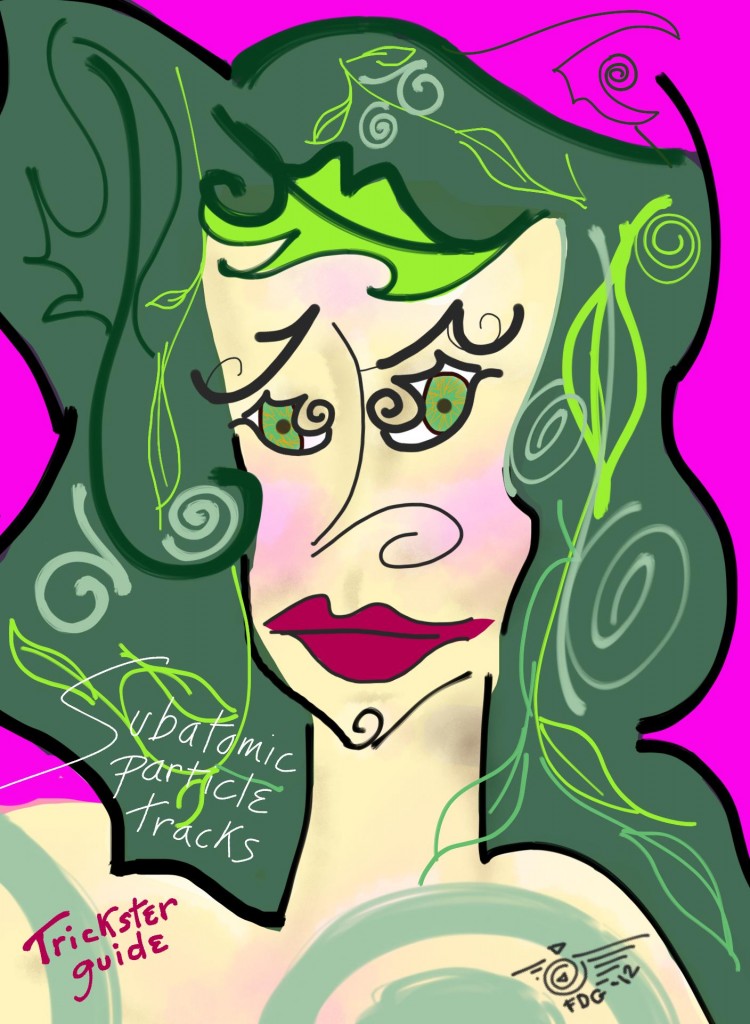
Training can be crucial. Just as a scientist studies his “craft,” so have I. I also spent years in trance, 24-7, researching as diligently as any scientist in a lab.
I’m not suggesting you trust yourself only if you do the full-time training or research I did. Mine was needed because of goals I had as a teacher and mystic. Otherworldly reality is innate in us all. Just as many linear-minded non-scientists trust their personal worldview, so should many mystics observe and assess their environments, drawing our own conclusions, instead of docilely following “experts.” I mention my full time commitment only to reinforce the extensive possibilities of mystical wisdom.
Insights I gain through altered states are building blocks of trainings I create. But I don’t carelessly throw something together in the name of Divine inspiration. I spend years developing a curriculum before teaching it.
My fastidiousness does not naysay the observations of someone without training. The psychic realm is as much a part of human heritage as ordinary daylight; we all have insights about it; and they are important contributions to community dialog. In fact, one of my goals as a teacher is to create tools that help people trust their insights and recover their innate mystical awareness, which has often been squelched.
Being a mystic does not deny your intellect. (And too many beautiful, astute, linear minds are used to invalidate somebody’s heartfelt, lyrical worldview.) I know amazingly left-right-brain integrated mystics.
It’s like being a musician. In my last year of college, I supposedly needed more units of logic-based classes to get my degree. But the college president felt that my thirty hours of music theory, which is mathematically based, obviated the need for further logic classes.
When I write a song, channel liturgy, or travel faerie realms for info, my intellect needn’t suppress my efforts. It can weave in and out of my emotive fanciful state, improving my effort. I also might go over what I have created to rewrite, rewrite, rewrite, until I’m satisfied.
In various mystical states, there’s a dance between the two sides of the brain and the heart and soul. Each aspect of you comes forward, adding what it can. All of you weaves constantly, in such rapid-fire succession of ever-changing intertwinings that you might be totally unaware of this complex inner interaction.
At such times, we learn truths that others may deny. We plug into immense powers to control our own destiny. We become part of miracle. Even other pagans may try to invalidate these gains, Goddess bless them, instead of realizing that their approaches and ours can be different without either of us being wrong.
But the things we learn in such states set us free.
This has been a limited view on mystical scholarship. But the crux is: Let yourself be free.
No Need to Fit In!
People trying to decide if I’m the right guide for them often say, “I’m eclectic, so I don’t know if I’ll fit into what you teach.”
Oh dear! It is terrible that the prevalence of bad teachers requires that issue to even come up.
Most of my students are eclectic. I am, too. Those who look for the core of reality, the heart of magic, and the essence of mysticism do not want to be boxed in by labels (Wicca, hedge witch, Druid, Taoist, Christian), and are not looking for ego-feeding titles. They are drawn to teachers who, whatever their path, support students to find their own idea—and experience—of the core of reality, heart of magic, and essence of mysticism. I hope I’m one such teacher.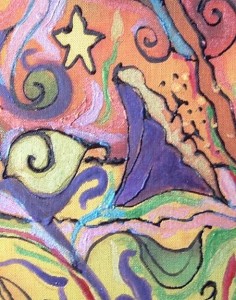
During our lessons, we transcend labels and titles, to focus on finding our individual beliefs, personal myths, and shamanic gifts. If folks already have them, I help them polish their personal approach, even if they’re already master level.
Magic, Spirit, and life cannot be standardized.
I do tend to call my classes “Wicca” or “Faerie.” I’m of the generation in which “Wicca” and “Faerie” referred to (among other things) individualized earth-spirituality. Unfortunately, nowadays, those terms are often used rigidly, to denote a set liturgy and belief system, which invalidates many beautiful Gaia lovers.
You’re not alone if you’ve faced invalidation. When first teaching (eek, that was in the eighties!), I thought I knew the one true way. Then I realized my students were my peers and fellow travelers. Guess what? After explaining I wld no longer support a hierarchy, 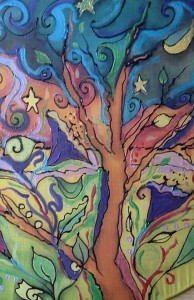 I lost many of my students, they migrated to a fundie tradition of fey magic. I was devastated, stunned that people I loved—many of these were my beloved initiates—could not make that move with me, that attempt at being egoless. It was, and still is, painful to see ego takes precedence over ethics, effective magic, fey sensibilities, and beauty. But I mention my experience because it might be validating for folks who went through something similar. Ok, enough negative stuff. To quote “Buffy, “not for me the furrowed brow.”
I lost many of my students, they migrated to a fundie tradition of fey magic. I was devastated, stunned that people I loved—many of these were my beloved initiates—could not make that move with me, that attempt at being egoless. It was, and still is, painful to see ego takes precedence over ethics, effective magic, fey sensibilities, and beauty. But I mention my experience because it might be validating for folks who went through something similar. Ok, enough negative stuff. To quote “Buffy, “not for me the furrowed brow.”
Onto the rest of my beautiful day—my Gods’ embrace, a flow of joy, magic, and right livelihood, a flow carrying me toward even more joy, magic, and right livelihood. I hope this post is validating and/or, if you’re considering me as a guide, informative.
♥♥♥♥♥♥♥♥♥♥♥♥♥♥♥♥♥♥♥♥♥♥♥♥
Want shamanic counseling? I can guide by phone. Book an appointment online. http://www.outlawbunny.com/pastoral-counseling/
Ethical (and Unethical) Fey Teachers
Info about December 2020 update is at bottom of post.
Ethical (and Unethical) Fey Teachers
Overview: Fey Folk can help us find freedom and joy. But there are evil Fairies, too—the Unseelie. They want to hurt humans. Some witch teachers work with the Unseelie. Honor your wild heart, but stay safe.
Fey Folk Can Help Us Find Freedom, Joy, and Magic
For hundreds of years, fairy glimmers in the woods have beckoned, reflecting our secret longings and illuminating our honest needs. Puritanical moralists insist the Fey are undeniably evil. However, we know better: the Good Folk can help free us from repressive religions and absurd social strictures. (Good Folk is another name for Fairies.) In addition, when we are barraged by a logic that denies magic and miracles, that fairy glimmer reassures us, telling us that mysticism is real and that the wondrous is possible.
But not all dwellers of the fairy realms are beneficent.
The Seelie Queen, Unseelie Queen, and Evil Magicians
For our purposes, this oversimplified definition of Seelie and Unseelie works well:
The Faery Queen (Fairy Queen, Faerie Queen…) is also known as the Seelie Queen and Her court known as the Seelie court. She and Her Seelie want to help us. They devote Themselves to that … when they are not off having a great time dancing, singing, and otherwise carrying on. … And even their joyful activities ring through the cosmos blessing us. However, there is an Unseelie Court–Fairies who are evil. The Unseelie Queen and her followers malevolently perpetuate great tragedy for humans.
And not all fey-touched magicians can be trusted, whether they call themselves Fey, Fay, Fae, Faerie, Feri, Fairy, or Faery.
Fulfill Your Longing and Stay Safe
Sate your hunger for luminous mystery and faerie mysticism, and for the fellowship thereof. However, it’s easy for that ferocious appetite, authentic and important though it is, to blind a person to the following: some individuals with immense glamour and fey power are pawns of the Unseelie Court. Perhaps this happens because power has made them so haughty that they are unwitting dupes for the forces of evil. Or perhaps they themselves become outright evil. Whatever the reason, it does happen.
Silence allows it to continue. I will not tolerate Fey practitioners who molest children, sexually harass students, disregard magical safety, and offer flashy curriculums that lack a moral compass strong enough to withstand the rigors of daily life. That lack of compass leaves many students frustrated and miserable for years because they’re working hard to grow without sufficient measures to guide them toward real spiritual progress. I’m available by phone if you’re concerned about yourself or a friend. I want to support newbies to the community—because they might be especially vulnerable—or anyone else who needs support.
Honor Your Wild Heart and Protect It
While many cautions against the fey realms can be rightly interpreted as disguised attempts to suppress us, and to make us milquetoast, there are valid cautions. Dark mysteries needn’t be an excuse for a teacher to dominate. Wild hearts don’t mean that a teacher can ignore your sexual boundaries. Powerful magic needn’t lack caution. The quest for utter fulfillment needn’t lead to hollow longings or addiction.
There are dark mysteries that are wholesome, wildness that is authentic, satiation that is both attainable and ethical. Powerful magic can be safe. Fey fellowship, wild lovers, and powerful teachers can be both otherworldly and good. I hope you find them all.
If your Faerie heart resonates with what you read on this site, I invite you to my events. My newsletter will let you know about upcoming events, including free monthly Fey rituals via teleseminar or Zoom. Click the banner below to subscribe.
Update: December 2020 I expanded on my above essay for clarity. I posted it on this site in 2012 and, before that, in 2008, to friends in a now defunct Yahoo forum. Sadly, the problems addressed by the post continue and happen to both newbies and longtime time witches. However, we can stop this. So mote it be!

